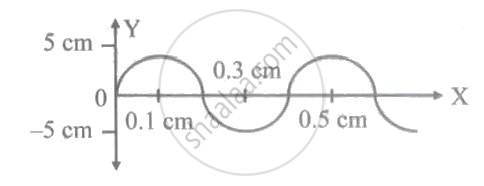Advertisements
Advertisements
प्रश्न
Answer briefly.
Wave motion is doubly periodic. Explain.
उत्तर
- A wave particle repeats its motion after a definite interval of time at every location, making it periodic in time.
- Similarly, at any given instant, the form of a wave repeats itself at equal distances making it periodic in space.
- Thus, wave motion is a doubly periodic phenomenon, i.e., periodic in time as well as periodic in space.
APPEARS IN
संबंधित प्रश्न
Answer briefly.
Define amplitude.
Answer briefly.
Define wavelength of a wave.
Answer briefly.
Draw a wave and indicate points which are
- in phase
- out of phase
- have a phase difference of `pi/2`
Answer briefly.
Define the relation between velocity, wavelength and frequency of the wave.
Answer briefly.
Explain what is meant by phase of a wave.
Define progressive wave.
State any four properties of progressive wave.
Two waves of the same amplitude superimpose to produce two beats per second. What is the ratio of minimum loudness to that of one of the waves?
The frequency of a tuning fork is 384 per second and velocity of sound in air is 352 m/s. How far the sound has traversed while fork completes 48 vibration?
The wave of the wavelength 30 cm and frequency 100 Hz will be ______.
When the kinetic energy of an electron is increased, the wavelength of the associated wave will ______.
The following figure shows the shape of part of a long string in which transverse waves are produced by attaching one end of the slring to tuning fork of frequency 300 Hz. The velocity of the waves is ____________.

In a closed pipe, the note of fundamental frequency can be produced if the length of the air column is equal to ____________.
The frequency of a tuning fork is 220 Hz and the velocity of sound in air is 330 m/s. When the tuning fork completes 80 vibrations, the distance travelled by the ______.
A progressive wave of frequency 50 Hz is travelling with velocity 350 m/s through a medium. The change in phase at a given time interval of 0.01 s is ______.
The equation of wave motion is `y = 6 sin[12pit-0.02pix+pi/2],` where x is in m and t in second. The velocity of the wave is ______.
The displacement-time graphs of two particles A and B are straight lines making angles of 30° and 60° respectively with the time axis. If the velocity of A is vA and that of B is vB, the value of vA/vB is ______.
The wavelength of two waves are 50 and 51 cm respectively. If the temperature of the room is 20°C then what will be the number of beats produced per second by these waves, when the speed of sound at 0°C is 332 m/s?
The width of a slit is 0.012 mm. Monochromatic light is incident on it. The angular position of first bright line is 5.2°. The wavelength of incident light is ______. [sin 5.2° = 0.0906].
A source of 300 Hz frequency, an observer and a wind are moving as shown in the figure with respect to the ground. The frequency heard by observation is ______.

(Take, the speed of sound in air = 340 m/s)
An astronaut is approaching the moon. He sends out a radio signal of frequency 5000 MHz and the frequency of echo is different from that of the original frequency by 100 kHz. His velocity of approach wrt, to the moon, is ______.
A progressive wave of frequency 500 Hz is travelling with a velocity of 360 m/s. How far apart are two points 60° out of phase?
Wave of frequency 500 Hz has a phase velocity 360 ms-1. The phase difference between two displacement at a certain point at time 10-3 s apart will be ______.
The energy of photon corresponding to a radiation of wavelength 600 nm is 3.32 × 10−19 J. The energy of a photon corresponding to a wavelength of 400 nm is ______.
